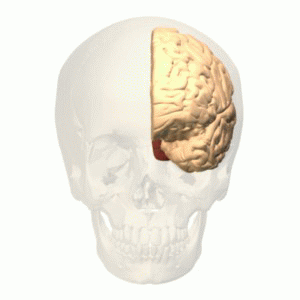Occipital Lobe
Original Editor - Lucinda hampton
Top Contributors - Lucinda hampton
Introduction[edit | edit source]
The occipital lobe is the seat of most of the brain's visual cortex, allowing you to see and process stimuli from the external world and to assign meaning to and remember visual perceptions. Located just under the parietal lobe and above the temporal lobe, the occipital lobe is the brain's smallest lobe, but its functions are indispensable.[1]
Anatomy[edit | edit source]
The occipital lobe is the smallest lobe accounting for only 18% of the total neocortical volume. The boundaries of the occipital lobe have been arbitrarily defined, giving it a triangular shape[2].
Sub Heading 3[edit | edit source]
Damage to the occipital lobe can include:
- Difficulty with locating objects in environment
- Difficulty with identifying colours (Colour Agnosia)
- Production of hallucinations
- Visual illusions - inaccurately seeing objects
- Word blindness - inability to recognise words
- Difficulty in recognizing drawn objects
- Inability to recognize the movement of an object (Movement Agnosia)
- Difficulties with reading and writing[3]
Resources[edit | edit source]
- bulleted list
- x
or
- numbered list
- x
References[edit | edit source]
- ↑ Spinalcord Occipital Lobe Available from:https://www.spinalcord.com/occipital-lobe (accessed 3.1.2021)
- ↑ Radiopedia Occipital Lobe Available from: https://radiopaedia.org/articles/occipital-lobe?lang=gb(accessed 3.1.2021)
- ↑ QLD govt. Occipital Lobe Available from: https://www.health.qld.gov.au/abios/asp/boccipital(accessed 3.1.2021)







